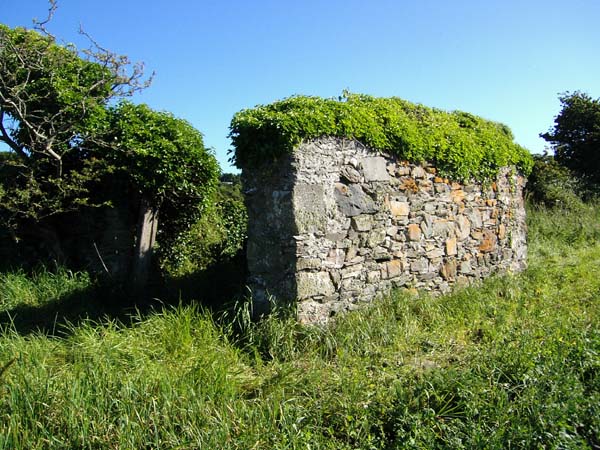| The gathering
and processing of kelp  was once an important industry in Ireland, particularly in the 18th
and 19th centurys when it was much in demand by the linen industry
where it was used to bleach the cloth. It was also used in the process
of making glass. Much of it was used locally but some was exported
to England and Scotland, in Countys Down and Antrim which had a
high concentration of linen manufacturing, a large number of the
people were engaged in the kelp industry, especially around Strangford
Lough, where on its relatively sheltered and for the most part
rocky shore the Bladder Wrack which was the raw material grew in
profusion.
was once an important industry in Ireland, particularly in the 18th
and 19th centurys when it was much in demand by the linen industry
where it was used to bleach the cloth. It was also used in the process
of making glass. Much of it was used locally but some was exported
to England and Scotland, in Countys Down and Antrim which had a
high concentration of linen manufacturing, a large number of the
people were engaged in the kelp industry, especially around Strangford
Lough, where on its relatively sheltered and for the most part
rocky shore the Bladder Wrack which was the raw material grew in
profusion.
Bladder wrack grows on rocks in the inter
tidal zone that are not subjected to excessive wave action, often
large stones were placed in rows on sandy sections of the shore,
in order to create a habitat for the plant. Harvesting took place
in three year cycles, the plant was cut and transported above the
high water mark, if the shore was excessively rocky panniers would
have been used, if not carts or wheelbarrows were used. The plants
were laid out to dry in the wind and sun on the grass or draped
over a wall.
When the material was dry it was burnt in
a kiln, this is a rather grand description of, usually a circular
shallow stone lined pit about 1,5 meters in diameter. A fire was
lit with whatever was available, straw, turf, sticks etc. and the
dried seaweed slowly added, it was essential that the fire was kept
low otherwise the end product would be destroyed. The residue with
a similar consistency to porridge gathered in the bottom of the
pit, this had to be stirred frequently with preferably a ash pole.
The burning continued until the kiln was full, this took anything
from 8 to 12 hours and was attended by two to four people, it was
then allowed to cool for about a day, the residue had then hardened
into a dark blue kelp, which was then broken up and stored under
cover. The image above was taken on the southern shore near Audleystown
Cairn, it may have once been used to store kelp. |

 was once an important industry in Ireland, particularly in the 18th
and 19th centurys when it was much in demand by the linen industry
where it was used to bleach the cloth. It was also used in the process
of making glass. Much of it was used locally but some was exported
to England and Scotland, in Countys Down and Antrim which had a
high concentration of linen manufacturing, a large number of the
people were engaged in the kelp industry, especially around
was once an important industry in Ireland, particularly in the 18th
and 19th centurys when it was much in demand by the linen industry
where it was used to bleach the cloth. It was also used in the process
of making glass. Much of it was used locally but some was exported
to England and Scotland, in Countys Down and Antrim which had a
high concentration of linen manufacturing, a large number of the
people were engaged in the kelp industry, especially around